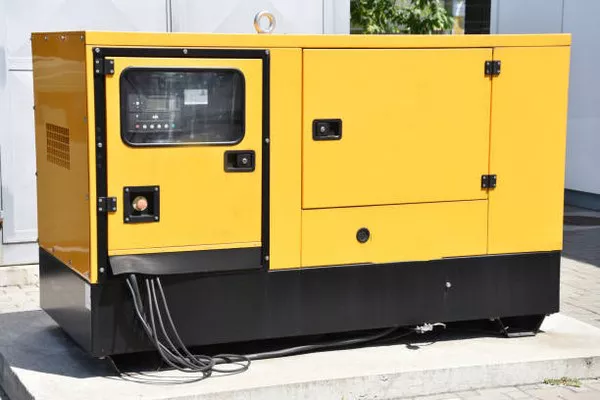In the pursuit of cleaner and more sustainable energy sources, researchers and engineers have been diligently working to develop innovative technologies that harness the power of nature while minimizing environmental impact. One such technology that holds great promise in the realm of energy generation is the Current Transformer Generator (CTG). This article aims to provide a comprehensive overview of the CTG, its working principles, benefits, and its role in shaping the future of power generation.
The Current Transformer Generator: A Brief Overview
The Current Transformer Generator is a cutting-edge energy conversion device that transforms mechanical energy directly into electrical energy using a fundamentally different approach than traditional generators. While conventional generators rely on electromagnetic induction, where a magnetic field induces current in a wire coil, the CTG operates on the principle of magnetostriction combined with a unique mechanism of energy conversion.
Working Principles
At the heart of the CTG’s operation lies the phenomenon of magnetostriction. Magnetostriction is the property of certain materials to change their shape under the influence of a magnetic field. In a CTG, this property is harnessed to convert mechanical energy into magnetic energy. When subjected to mechanical stress – induced by vibrations or pressure changes – the core material of the CTG undergoes deformation, causing variations in its magnetic properties. This dynamic change in magnetic characteristics results in a magnetic field that varies over time, leading to the induction of an electric current in surrounding coils.
The CTG’s unique working principle makes it particularly suitable for harnessing energy from a range of sources, including mechanical vibrations, fluid flow, and even human movement. This adaptability allows the CTG to be integrated into various applications, from large-scale industrial installations to small, self-powered sensors.
Advantages of the Current Transformer Generator
Efficiency:
Unlike traditional generators that rely on mechanical rotation, the CTG’s direct energy conversion mechanism eliminates the need for multiple energy conversion steps, resulting in higher overall efficiency. This can translate to more energy being extracted from the same mechanical input.
Sustainability:
The CTG’s ability to convert ambient mechanical energy into electricity makes it an ideal candidate for sustainable energy harvesting. Vibrations from machinery, wind, and even footsteps can be transformed into valuable electrical power, reducing the dependence on fossil fuels and lowering the carbon footprint.
Versatility:
The CTG’s unique working principle allows it to operate in diverse environments and under various conditions. This versatility opens up possibilities for applications in remote and hard-to-reach locations, powering sensors, monitoring devices, and even low-energy electronics.
Durability:
With fewer moving parts and a simplified design, the CTG offers enhanced durability and reliability. Its resistance to wear and tear makes it a cost-effective solution for long-term energy generation in challenging environments.
Applications of the Current Transformer Generator
The Current Transformer Generator’s adaptability and versatility have spurred interest in various industries, leading to a wide range of potential applications:
Industrial Monitoring:
CTGs can be incorporated into machinery and equipment to convert vibrations and mechanical stresses generated during operation into electrical power. This harvested energy can then be used to power sensors, transmitters, or data loggers, facilitating continuous monitoring of machinery health and performance.
Infrastructure:
Urban environments are rich sources of mechanical vibrations, from traffic movement to pedestrians walking on sidewalks. Integrating CTGs into infrastructure components, such as roads or bridges, could provide a sustainable way to generate electricity while also contributing to the smart city concept.
Renewable Energy:
In the renewable energy sector, the CTG could complement solar and wind power generation. By harnessing vibrations generated by wind-induced structural oscillations in wind turbines or vibrations in solar panel supports, CTGs could contribute to the overall energy output of these systems.
Wearable Technology:
As wearable technology becomes more ubiquitous, the need for sustainable power sources for these devices grows. CTGs can be integrated into clothing, shoes, or accessories, converting the wearer’s movements into electrical energy to power sensors, health trackers, and communication devices.
Challenges and Future Outlook
While the Current Transformer Generator shows great promise, several challenges must be addressed to realize its full potential. The efficiency of energy conversion, scalability for larger power outputs, and compatibility with different materials are areas that require further research and development. Additionally, advancements in materials science and manufacturing techniques will play a pivotal role in optimizing the CTG’s performance and reducing its cost.
Looking ahead, the CTG’s role in the evolving energy landscape appears promising. Its ability to harness energy from ambient sources aligns well with the growing demand for sustainable energy solutions. As research and development continue, the CTG’s applications are likely to expand, contributing to a more energy-efficient and environmentally friendly future.
Conclusion
The Current Transformer Generator represents a significant advancement in energy conversion technology, offering a novel approach to transforming mechanical energy into electrical power. With its efficiency, versatility, and potential to revolutionize sustainable energy harvesting, the CTG has the potential to reshape the way we generate electricity across various industries. As research progresses and challenges are overcome, the CTG could emerge as a cornerstone of the transition toward cleaner, greener, and more efficient energy generation systems.

